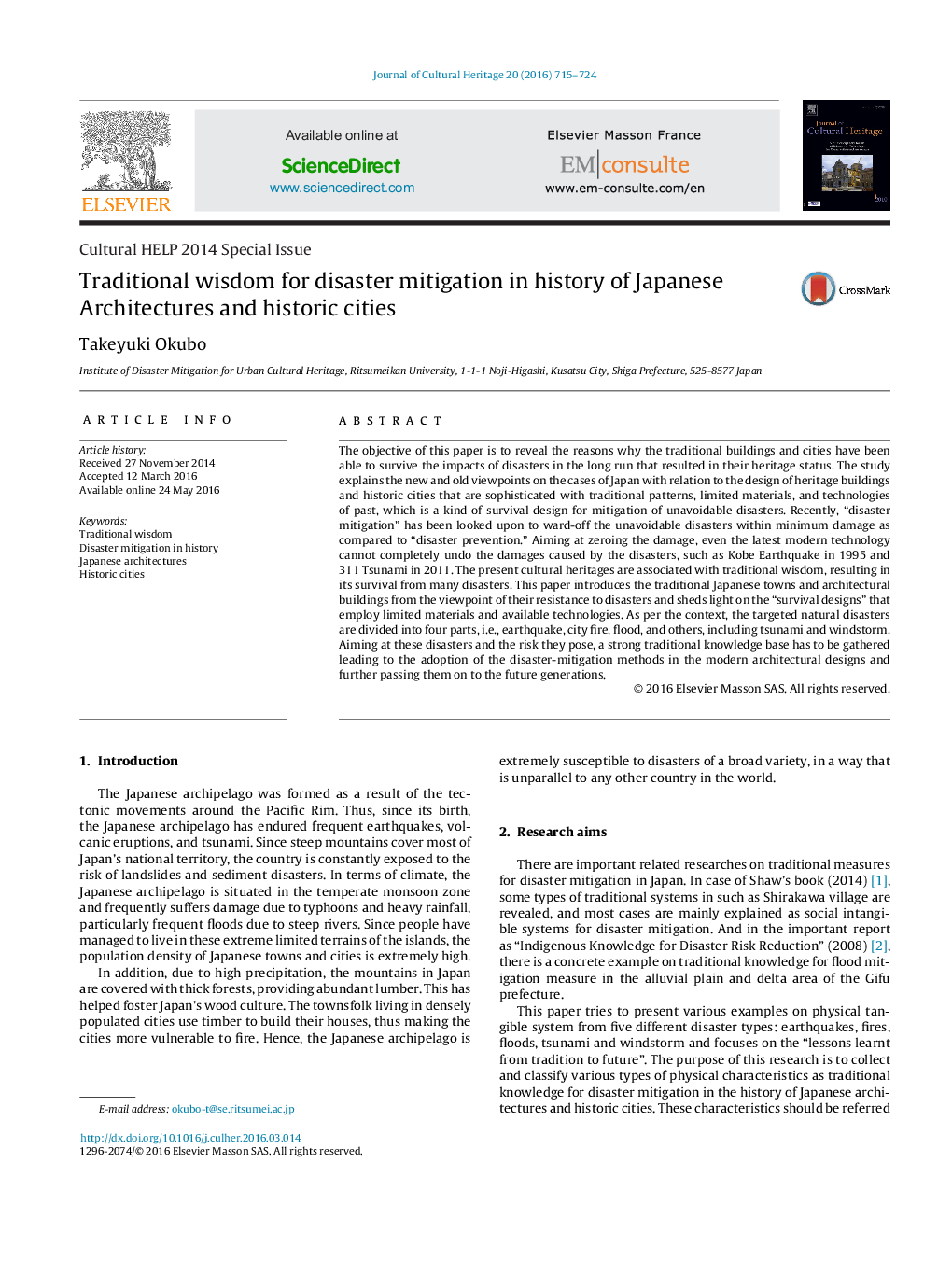| Article ID | Journal | Published Year | Pages | File Type |
|---|---|---|---|---|
| 1037829 | Journal of Cultural Heritage | 2016 | 10 Pages |
Abstract
The objective of this paper is to reveal the reasons why the traditional buildings and cities have been able to survive the impacts of disasters in the long run that resulted in their heritage status. The study explains the new and old viewpoints on the cases of Japan with relation to the design of heritage buildings and historic cities that are sophisticated with traditional patterns, limited materials, and technologies of past, which is a kind of survival design for mitigation of unavoidable disasters. Recently, “disaster mitigation” has been looked upon to ward-off the unavoidable disasters within minimum damage as compared to “disaster prevention.” Aiming at zeroing the damage, even the latest modern technology cannot completely undo the damages caused by the disasters, such as Kobe Earthquake in 1995 and 311 Tsunami in 2011. The present cultural heritages are associated with traditional wisdom, resulting in its survival from many disasters. This paper introduces the traditional Japanese towns and architectural buildings from the viewpoint of their resistance to disasters and sheds light on the “survival designs” that employ limited materials and available technologies. As per the context, the targeted natural disasters are divided into four parts, i.e., earthquake, city fire, flood, and others, including tsunami and windstorm. Aiming at these disasters and the risk they pose, a strong traditional knowledge base has to be gathered leading to the adoption of the disaster-mitigation methods in the modern architectural designs and further passing them on to the future generations.
Keywords
Related Topics
Physical Sciences and Engineering
Chemistry
Physical and Theoretical Chemistry
Authors
Takeyuki Okubo,
